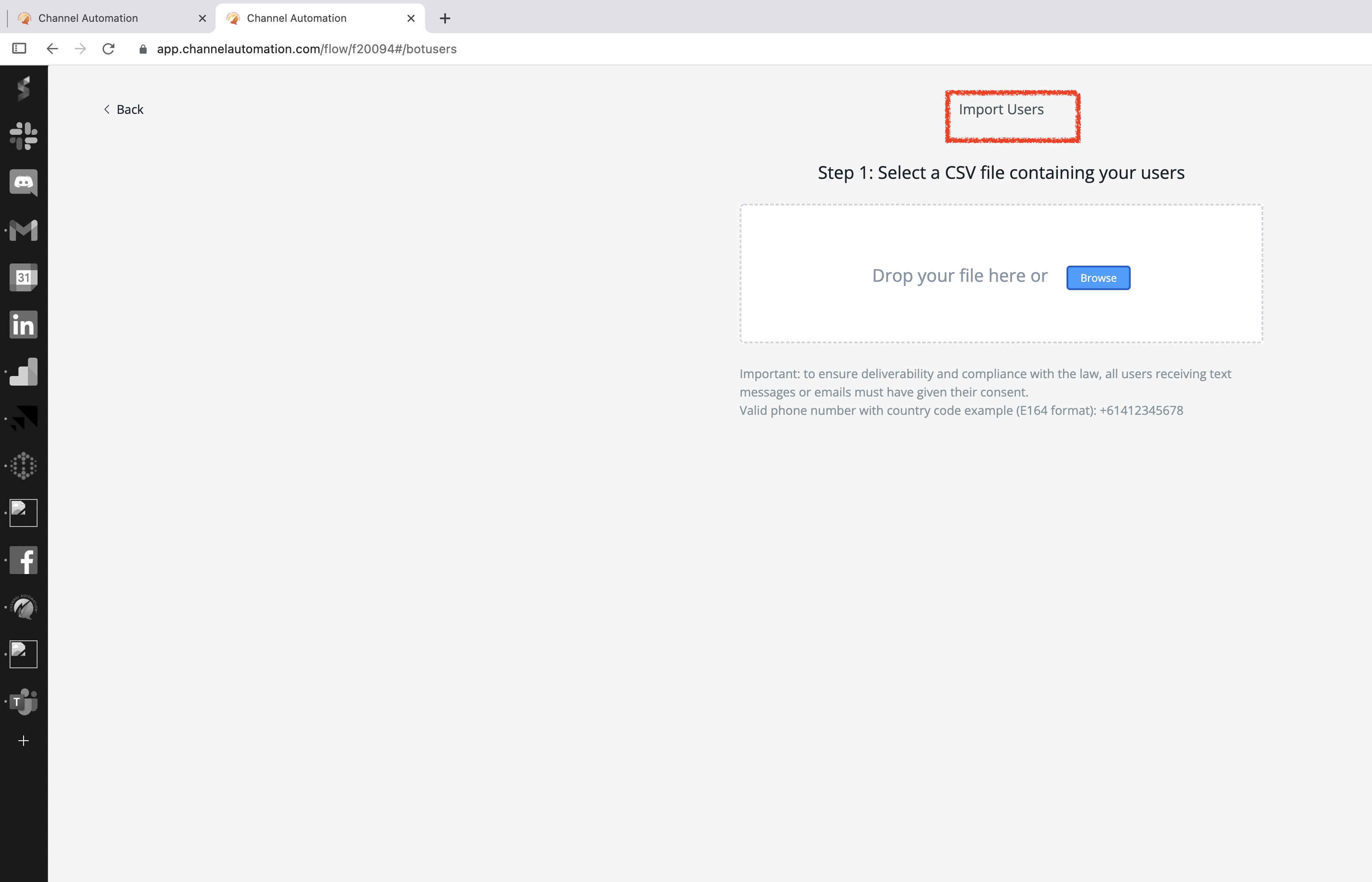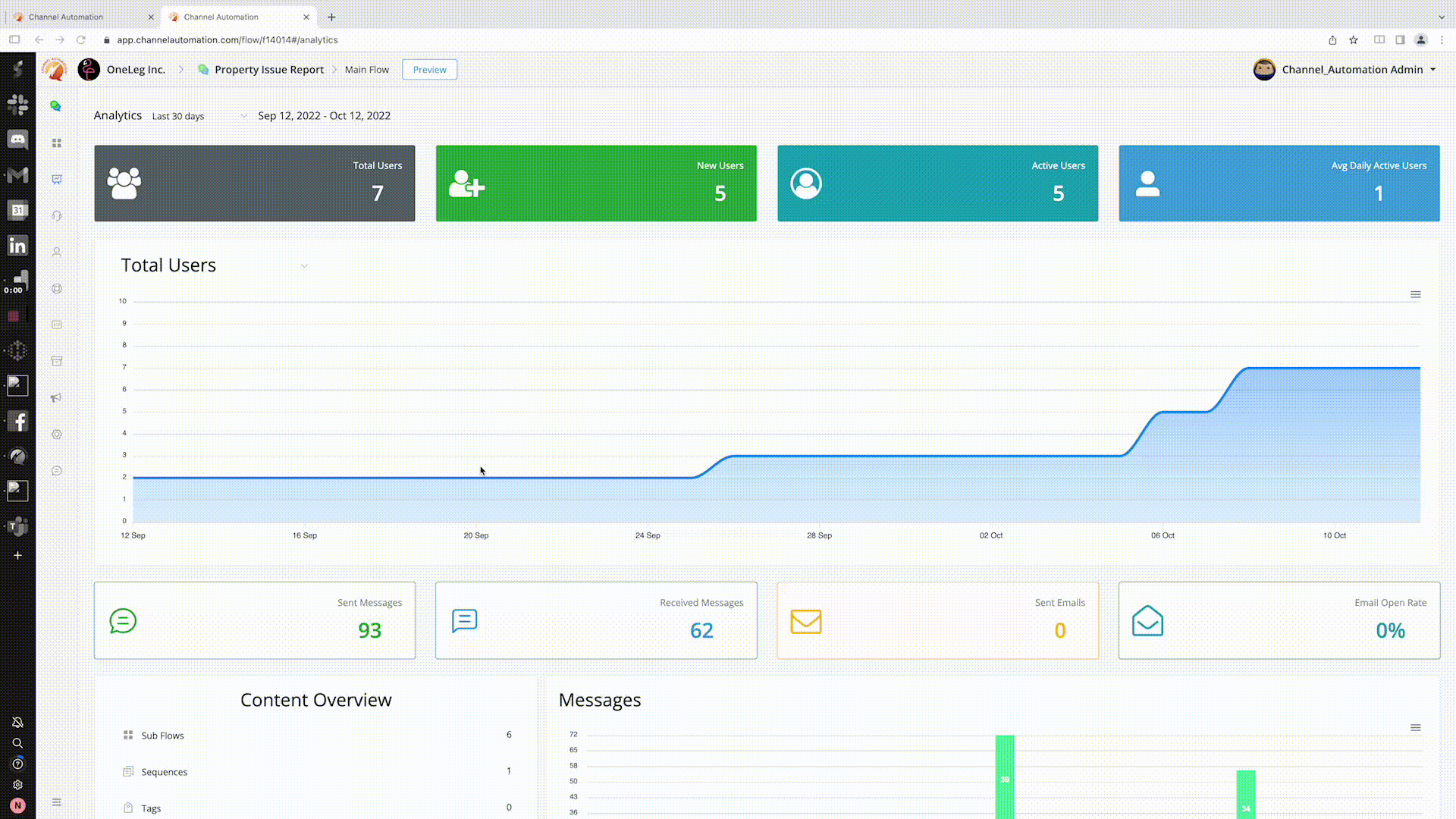The Ultimate Guide to SMS Lead Generation
Product
Lead generation is one of those things that seems like a simple concept, but there are many different ways to approach it. You could hire a firm to do it for you, or you could use automation software. But what about text messaging? This is something that most people don't think about and therefore never really try. However, it might just be the best way to generate leads for your business. In fact, according to research, nearly 40% of mobile phone owners have used SMS to make purchases. So why not take advantage of this statistic and implement a lead generation campaign?
Lead generation is one of those things that seems like a simple concept, but there are many different ways to approach it. You could hire a firm to do it for you, or you could use automation software. But what about text messaging? This is something that most people don’t think about and therefore never really try. However, it might just be the best way to generate leads for your business. In fact, according to research, nearly 40% of mobile phone owners have used SMS to make purchases. So why not take advantage of this statistic and implement a lead generation campaign?
1. Import and collect existing leads
Before you use SMS marketing, first collect your contacts by subscribing them to an email list, creating a contact form, or collecting their phone numbers from other sources. Then, import these contacts into a spreadsheet so you can send out messages later. You must finally import those leads into the text messaging marketing system of your choosing. If you don’t follow these steps correctly, you won’t get the results you want from using SMS marketing.

2. Use a short code and keyword to capture leads
The most important thing you can do to increase your conversion rates is to capture leads via text messaging. This requires some planning and preparation, but it’s well worth the effort. You can use a short code and keyword to send people to your website. A short code is simply a group of numbers that are used to connect callers to different businesses. For example, a short code of 55555555 connects consumers to a local pizza parlor. If someone texts the short code 55555555, he or she gets connected directly to the restaurant. But what about capturing leads? How do we go about doing that? We can start with the following steps:
1. Create a list of keywords related to your product or service.
2. Find out where people are searching online for those terms.
3. Use those keywords in your ad copy.
4. Run ads on Facebook, Instagram, LinkedIn, Twitter, etc.
5. Keep track of how many times each keyword is searched.
6. Choose one or two keywords that are highly relevant to your business and keep repeating them throughout your website.
7. Send text messages to your short code and keyword.
8. Track conversions and see which ones convert best.
9. Repeat.

3. Add web forms to your homepage
Web forms are very vital in lead generation. They help you collect email addresses and names of potential customers. You can even ask people to fill out a questionnaire. This helps you better understand what your audience wants and how you can best serve them. For example, if someone fills out a survey about the products you sell, you know exactly where to focus your marketing efforts.
There are lots of platforms online to help you easily add a web sign up form to your website.
These web forms are a great way to capture leads. However, most businesses don’t take advantage of this method because they think it requires coding knowledge. But, actually, there are many ways to build a web sign up form without being a developer. Here are three methods that require no coding skills.
1. Use a WordPress plugin
WordPress is one of the world’s leading blogging platforms. And today, it’s used by over 30% of all websites. So, why wouldn’t you want to include a web sign-up feature on your blog? Well, it’s easier said than done. But, thanks to plugins, it’s now possible to add a web sign up button to your post. All you have to do is install a simple plugin like Contact Form 7.
2. Create a landing page
If you already have a website, you can simply redirect visitors to a specific page. In fact, this is often the easiest option. But, if you don’t have a website, you might consider creating a dedicated landing page. A landing page is just another word for a sales page. If you’re selling something, chances are you’ll want to provide a web sign up form.
4. Set up an auto-reply
There is no way for you to stay active online at all times. Your customer service team might be dealing with many prospects at once, while others might need to wait.
When leads contact you while you are away, busy, or asleep, they might be discouraged, seek alternatives, and you might lose these potential customers to your competitors.
You should make sure you do not lose a single lead. Instead, you should set up an auto-response message that will be sent to the recipient when the keyword is typed in.
In fact, the auto-reply function may be one of the best ways to introduce yourself, your new products, your services, or even information you may find useful in the future.
5. Use SMS autoresponders to nurture leads
Leads are valuable customers who buy products and services from you. But sometimes leads fall off the radar and become lost in the shuffle.
To avoid losing potential sales, you need to nurture your leads. One of the easiest ways to do this is by sending nurturing text messages to your leads. Text messaging allows you to send personalized messages to individual contacts, and it’s a low-cost option compared to other forms of communication.
One of the best features of text message marketing is that it’s easy to set up. All you need is a smartphone and a plan with unlimited texts. Then just create a script that includes the name of the lead, the offer you’d like to share, and a link to your landing page.
After you’ve sent the message, wait a few days and then follow up again to confirm whether the person opened the message. If he didn’t open it, try another message. Repeat this process until you reach the point where you feel comfortable closing the deal.
Text message marketing is a powerful form of customer engagement, and it’s especially effective for nurturing leads. So next time you’re thinking about sending a text message to someone, consider using sequences to build relationships with your leads instead of just pushing them toward a sale.

6. Collect data to qualify leads
Text messaging is one of the most effective ways to communicate with prospects. However, it is important to remember that text messages aren’t just about communicating information; they can also be used to collect information. This type of information could include how many people you sent a message to, what day and time you sent the message, where the person lives, etc. These pieces of information can help you understand whether someone is interested in what you offer.
In addition to asking for information, there are several different ways to qualify leads with data collection. For example, you could send out a survey to gather feedback from your audience. You could also set up a free trial offer and ask for signups. Or, you could even use a form to collect contact information like names, emails, phone numbers, and addresses.
7. Segment your customers
Segmentation is one of the best ways to improve your marketing ROI. If you are looking for a way to increase revenue without spending too much money, you must focus on targeting the people who are interested in your product/service. This is where segmenting comes into play. By creating groups of people based on certain criteria, you can easily identify the type of person you want to reach out to.
You should start by collecting data about your contacts. There are many tools that allow you to collect contact information like email addresses and phone numbers. Once you have collected enough data, it is time to analyze it. Using software, you can group your contacts into different categories. For example, you can separate prospects into three main groups:
• Those who have shown interest in your products/services
• Those who haven’t expressed interest yet
• Those who have never been interested in your products/services.
Once you have identified the groups, you can begin sending each group different types of messages. In addition to this, you can also choose to send specific offers to each group.
8. Personalize your messages
Personalized messaging helps businesses connect with prospects. You can personalize your messages based on the recipient’s interests, location, and even what they’re doing online.
You’ll want to start by collecting relevant customer data such as email addresses, phone numbers, names, and postal codes. Next, you’ll want to identify those leads and customers that are most likely to respond to your messages. Then, you’ll want to send out targeted messages to each lead/customer group. This way, you’ll increase response rates and reduce the amount of spam sent.
9. Include relevant links to forms
You should always include relevant URLs when sending out text messages. To insert them into the message, use a URL shortening service.
This is a free service that will shorten your long links and make it easier to send them out in bulk.
10. Create a strong CTA
You’ve got a great offer, and now it’s time to ask someone to buy from you. But how do you sell without selling? This is where a “call to action” comes into play. A call to action is the final piece of your sales funnel. It tells people exactly what to do. For example, a call to action might say, “Buy Now.” Or, “Click Here.” Or, “Call Us Today!”
The best way to craft a compelling call to action is to start with the end in mind. What are you trying to accomplish? If you want to generate more leads, you could use a call to action like, “Learn More About Our Services.” Or, “Get Started With Your Free Consultation.”
Once you know what you want to achieve, you can figure out what you want your prospect to do. Then, you’ll craft a message that makes sense to your audience. When you write copy, keep in mind that you’re writing for humans. People don’t read words; they read stories. So, your headline should tell a story. And your body copy should support that story.
Your call to action should always lead to something specific. Don’t just say, “Call us today.” Tell them why they should call you today. Maybe you want to close a deal. Maybe you want to learn more about their needs. Whatever it is, make sure your call to action is crystal clear.
11. Measuring your performance with analytics
Most SMS messaging platforms offer some type of analytics tool to help you understand how well your campaign is performing. You can see things like how many people opened your text, how many clicked on it, and whether they converted. If you want to know exactly why someone didn’t convert, you can look at the data to find out where they stopped reading, or even what they did next.
Analytics tools let you dig deeper into your SMS marketing efforts than simply looking at open rates and click-through rates. They give you insight into everything from customer behavior to conversion rates. This information helps you make better decisions about your text messaging strategy.
Conclusion
The best way to reach out to potential clients is through text messaging. While email marketing is still important, texting allows you to connect with people where they are most comfortable on their phones. This is especially true for younger generations. In fact, according to Nielsen research, one-third of teens prefer texting over calling. And while there are some limitations to texting, like limited data plans and the inability to see someone’s face, it offers many benefits. For example, it is much easier to send a short text than it is to write a long email. Additionally, texts are usually read within seconds, whereas emails often take days to receive responses.
Texting is also a cost-effective form of communication because you don’t pay per recipient. This means that sending a mass amount of texts is less expensive than sending multiple emails. Finally, texting is simple. You just type what you want to say into a phone and hit send. There is no complicated setup process, and you don’t have to worry about having someone else set up your account.
However, texting does come with certain risks.
First, you must make sure that your recipients know how to respond to your messages. If your target market doesn’t understand text messaging, it could cause confusion and frustration among those receiving your messages.
Second, texts aren’t always delivered immediately. Sometimes, people won’t even open them until hours later.
Third, texts are easily lost in cyberspace. They can disappear without warning.
Fourth, texts can be misinterpreted. People might think you’re being rude or mean when you’re actually trying to be friendly. Lastly, since texting isn’t as personal as talking to another person, you lose some of the emotional connection that you have with your clients. However, if you do everything right, texting can help you build relationships with your customers.
FAQs
What is Lead Generation, and Why Do You Need It?
Lead generation tools are great because they allow you to collect contact information from potential clients without having to do anything manually. In fact, most lead generation systems will automatically send out emails to prospect once they’ve signed up. This allows you to keep track of those leads and follow up with them later.
Where SMS Lead Generation is Mostly Used?
SMS lead generation has become a very popular method of generating leads for businesses. It’s one of the most cost-effective ways to generate new business, and it can be used in many industries.
SMS lead generation is a marketing strategy that is used by any serious business that needs paying customers. They benefit from SMS lead generation because it connects them more effectively with prospects.
The main reason why businesses use this type of marketing strategy is to increase their sales and profits. This can be done in the following ways:
- Increase your customer base
- Generate new leads
- Improve your brand awareness
- Get feedback on your products or services
- Create a better relationship with your clients
- Build loyalty
- Boost your reputation
- Reach out to people who are not yet aware of you or your service



